Original Image: Steve Gullick
Patrick Carroll is a producer currently completing a PhD in Music Composition.
On the 4th of May, Jon Hopkins will release his new record, ‘Singularity’. Consistent with his past works, the album flows effortlessly from one track to the next. It is said that musical form plays a crucial role in establishing the meaning of a sound within a piece of music. Here, on the level of pieces within an album, that fact is truly evident: While the individual tracks each stand strong on their own, it is through a listening of the record from start to finish that they reveal their true identities and functions in the album as a whole.
Beginning and ending on the same note (the reason for which he explains below), the album glides through a strong building of electronic textures, hard-hitting percussion, and harmonies that are skilfully distributed across processed electronic and acoustic instruments.
After a peak in the middle, the music settle in energy but certainly not in complexity on other levels, becoming more organic in sound material, smoother in timbre, and gentler in percussion. I’ve loved Hopkins’ music for a while now, not only because listening to it is a profoundly immersive experience, but also because analysing it is the music-nerd’s equivalent to The Da Vinci Code. And this album is no less fruitful for the active listener. It was a pleasure to chat with Jon about his creative process, new acquisitions of software and hardware used on the record, and to gain insight into how he engages with music.
PC: Let’s start kind of outside the album itself – can you tell us a bit about the collaboration with Robert Hunter and Elliot Dear for the video of ‘Emerald Rush?
JH: Oh yeah. Yeah, it’s amazing isn’t it? Well basically they’re both people I’ve worked with before. I’ve worked with Elliot on three different videos, tied in with my King Creosote collaboration. Yeah, I guess he would’ve been pretty young when I met him, and he did this incredible job on three videos for us back then and he pretty much did everything himself and locked himself in a basement and just made himself ill almost with the amount of work he did, and it paid off because the videos he made for us kind of helped him get started. And now, we’ve come back and worked with him again and now he’s a very well-established animator and director. And Robert Hunter is someone he’s I think known for a while – I worked with him on the ‘Asleep Versions’ artwork, and it was a great little introductory trailer for that, and then also the entire album sleeve he did. So, getting the two of them together for that is pretty incredible. I mean, but the results are exceeding what I thought, you know? It’s one of the most unusual and magical videos I have ever seen.
PC: And how about the album artwork itself? Is that the sort of imagery that you had in mind while writing the album?
JH: Yeah usually I have absolutely no idea about the sleeve. I tend to just finish something and then talk to – I work with this company called Blink Industries for pretty much all my artwork stuff and they have a big team of artists and people. And usually I just go to them and say “I don’t really know what I’m doing, and who can we talk to who might be good for this?” But with this album I had something in mind, and it was this landscape and it was very specifically like this. And so in order to actually realise that, you can’t just sift through photos because you’re never going to find it, it was kind of in my head. So, I sat down with Steven McNally who’s an artist who works with Blink, and we basically built that image out of a composite of 7 or 8 different photos. Each element of it is from a different place and I like the fact that that landscape on the front does not exist (laughs).
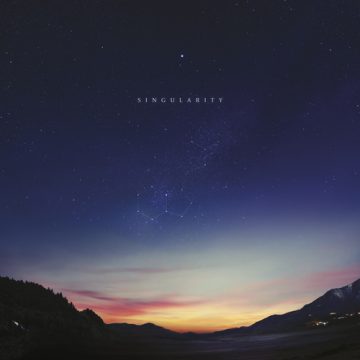
PC: You have described in the past how you have a very visual and almost synaesthetic listening experience with music, and how this plays into your compositional process. I’ve often wondered, has this always been the case through writing all your albums? Or did it become more prominent as you focused more heavily on sound design?
JH: No, it’s kind of been something throughout my entire life, and it’s not really even to do with specifically what I’m writing. In fact, one of my earliest memories – one of my earliest musical memories is when I was really young, like two and a half or maybe three years old, I just still have this very vivid memory of my Mum having this Beethoven symphony on, I can’t remember which one it was now, but I remember being able to see very specific kinds of shapes associated with the sounds I heard. I just remember this particular round shape that I saw whenever I heard the French horn part in this piece. You know how when you’re a kid you just have these miniature snapshots and then nothing surrounding them? Well that’s kind of my first one with music, and it’s kind of stayed the same since then really, it’s just as vivid. But it’s not synaesthesia in that I don’t involuntarily see colours with music, it’s an eyes shut thing you know? Or rather it’s almost a sort of more of an inner-world sort of thing, you know?
PC: I just saw you posted a video with the description saying you have had the idea for an album like this for 15 years. What kinds of ideas did you already have back then that you brought into the early stages of writing the album?
JH: Well in particular, it was the idea of it starting with this very simple tone, which I actually ended up getting from a piano string. I wanted it to be a sine wave, so the absolutely simplest possible electronic tone, but it just didn’t sound interesting enough (laughs), but I think there are probably records that start with that already. So I got that first sound from a piano string vibrating, and the idea was that I had all the way back then was that from this one note an entire musical universe would expand and then eventually it would kind of purify itself of its dirtiness or its brilliance or whatever – the energy would kind of burn itself out. By the end, we would be in a completely opposing place from where we started, but we would still end with the same tone, and it would feel effortlessly like we had arrived back at that point. So it was kind of that and this idea of – I know it sounds a bit ridiculous talking about such grandiose subjects in this context (laughs) – but the whole concept of the universe expanding from an infinitely small point and then eventually contracting back to that point, it just seemed like a beautiful structure for an album really. Yeah that alongside the title were things that appeared when I was very young. And then I also had this concept of sounds being – other sounds growing out of sounds that you’re hearing. So for example the choir that appears on ‘Feel First Life’, when you first hear it, it isn’t a choir, you know? It kind of grows out of this – well that is essentially like a synth pad or some kind of electronic sound. And then you suddenly realise that it’s – well at first you hear one or two voices, but then it’s like four, then six then eventually it’s like a full choir. So those were the things that I had always imagined doing, but you know, on a technical and experiential level, I did not have that ability back then, so I didn’t even try really, until the last couple of years.
PC: The structure of the album seems to be quite thoroughly thought out. Is this something that you consider while you’re writing each track, how it will fit in with the rest of the album? Or does this come at a later stage?
JH: No, it absolutely happens as I go. I think about even as long ago as eight months before mastering, I will have everything in order and there won’t be any new sections written. There are so many different ways of writing albums, I mean I know a lot of people who will write like sixty or seventy tracks, and then choose ten and sequence an album that way, and this is no better or worse than doing that, this is just how I like to do it. For me the structure is of utmost importance and it doesn’t really matter that people might not listen to it that way, you know? What matters is: making the best music I can make, and I’m a sucker for that ongoing story – the way that the end of one track affects the beginning of the next is of huge interest to me. And also, transitions between tracks, they’re magical, and I think the idea of doing away with that, so that everything is playlist-friendly is really sad. Yeah, so even if there is no one left listening to entire albums, I will still make them this way.
PC: You have previously mentioned how a new instrument can influence the style of music that gets written with it, like the MS-20 encouraging the more techno-influenced sound of ‘Immunity’. Was there anything specific that influenced the sound of ‘Singularity’?
JH: Yeah, absolutely. Quite a few things actually. The biggest change was moving from Logic to Ableton, which was life-changing, because it kind of brought the joy back into the writing process – it took away some of the grind. And the Moog Sub Phatty, and the Sub 37 which I had for a little bit, but yeah the Sub Phatty, it was my new synth addition, and you can hear that very prominently on ‘Luminous Beings’, the bassline on that one and various other points. The MS-20 is also on the record, but there’s only one place where it’s overtly kind of doing the same kind of thing as I did on ‘Immunity’, and that’s in ‘Everything Connected.’ Otherwise, different location at the start of the process made a big effect. I was living in California for a bit and I was sketching out ideas there, so the openness of the sound and maybe the increased, slightly more spiritual nature of it, I associate with the experiences I had there.
PC: You play a lot with space on this album and in your past music, with sounds moving around the stereo field, gradually changing width, and moving from the foreground to the background, and vice versa. What attracts you to make these sorts of trajectories of sound?
JH: Well I think that actually ties in with what you were just saying about the – or, what I was talking about the kind of closed-eye view I have of music, that music is a kind of dimensional space that I hold in my head, and because I see things that way particularly in terms of the mix but also in terms of sound placement, then it kind of makes sense that I’m going to want to really play with that, you know? It’s like arranging things in a room almost. I love the fact that the plugins around now allow you to really just have total control over where something sits. I mean, these are also just really interesting and creative elements of mixing a track for me as well. The mix is part of the composition in the way that I’m working now. Yeah I just love it – I love that surreal feeling when a sound comes out from the background into the foreground, or yeah I love playing with stereo width, because it’s just a very unusual experience if you’re on headphones certainly.
PC: Is that also what draws you to create the growths of certain sounds in your pieces, like how the voice in ‘Emerald Rush’ begins quite dry, and then gradually spreads and morphs to be more spacious and atmospheric by the end? Is that you again playing with that way the you visualise the sounds as you listen?
JH: Yeah I think so, but also I love sounds to evolve, you know? That one’s a good example, because if she had – if that vocal had come in just immediately fully wet with these delays and reverbs and whatever, it would be so much less interesting. At the start it’s a bit weird and a bit wobbly and like on its own and bone dry in the middle, and then gradually widening and twisting around. It’s just, I like everything to evolve, I don’t like sounds to be static really. I mean even bass drums will suddenly change through tracks, you know, different layers will come in, or if you listen to like, ‘Neon Pattern Drum’, and you follow what the bass drum does in that, it goes through really quite a lot of strange morphing changes. I like the idea of trying to create this musical world where everything is fluid and any sound can at any point just change, though it’s not necessarily always appropriate to do that. This is very much where Ableton came in actually, because you can do literally anything you can imagine, and you have to use some restraint because when I first started using it and I got good at it, I just had everything going all over the place all the time (laughs), and it was certainly very interesting, but it definitely didn’t make compositional sense. Now I had to kind of calm my excitement down about being able to do these things and get back into the zone of realising what actually deserves to be done or not.
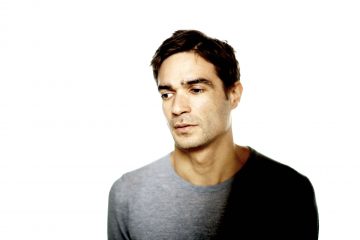
PC: You’ve spoken in the past about how prominent improvisation and instinct are in your process. Are the solo piano parts mostly improvised? Or do you have an idea of the chord sequence or melody before you begin?
JH: Well ‘Echo Dissolve’ is actually exactly the same as the intro to ‘Emerald Rush’, it’s supposed to be like a sort of dark counterpart for that track, you know, it’s note-to-note identical – it isn’t improvised, but the track ‘Recovery’ was born of an improvisation. But even I guess that melody line, that is the top line and the one from ‘Emerald Rush’ would have been improvised the first time around, it’s just that the performance wasn’t, you know, it was re-building something in a different instrumentation. But I think certainly when it comes to all the electronic tracks, the very first rhythms that get put down and all the chord sequences generally are single-take things which I then refine. It’s quite a funny kind of paradoxical way I work because the first things happen incredible quickly and then the refinement process can often take ages. I’m sort of two people in the studio really – the very fast one and then the very patient one.
PC: Do you find that improvisation and instinct play a role in how you process the audio? Or do you usually have a clear idea of what you want to achieve and how you’ll achieve it?
JH: No it’s absolutely the same actually, it’s very improvisatory. I’ve kind of stopped trying to imagine what sounds I’m going for anymore, you know? Because I’ve discovered that generally just going by instinct on every element has been the most interesting thing to do, particularly with the wealth of plugins that are around. There are a lot of chains that I will save and use as starting points, but then, I can basically never really rebuild a sound really, it just goes down all these crazy routes, and the resampled, and then pile on more stuff until it’s really just a completely new instrument. And kind of only going step-by-step, there’s no end-goal in sight. I’ll just know when it’s right. Or that’s the idea anyway.
PC: The structures of your pieces, especially on this record, are really interesting and intricate, often full of unexpected sections – ‘Everything Connected’ comes to mind when I say that. How do you approach the structure of your pieces? Do you work on different sections, then later piece them together? Or do you work in a more linear process?
JH: It’s changed a lot: when I used to work on Logic it would be very linear in that you would kind of try and get whatever the main payoff section of the track is, you’d try and get that working first. For example, in ‘Open Eye Signal’ I would go around that riff, and try and get that riff right for weeks, and then eventually put that in the middle then work backwards from there. But with Ableton, one of the reasons why the structuring is so much more free-sounding on this record, like you say there’s more unexpected stuff and things kind of go in directions you wouldn’t have imagined them going, and I put that down to the way Ableton allows you to improvise structures now. So that was something I could never do before. So, I line up all these different clips in different orders, and then just try jamming structures and end with things that happen on instinct and not through any kind of planning, and that’s one of the reasons it was so much more enjoyable to write I think. So yeah really again it’s down to that instinctual playing around thing – it just happens.
PC: I’m curious about your view of ownership of the sounds in your music. For example, you mentioned in the past that the Bass Drum in ‘Collider’ was made from a recording you made of a Tom drum. In terms of your percussion, do you find that you are drawn more to creating your own sounds from your own recordings than using samples from libraries?
JH: I kind of use these days whatever works, whatever’s inspiring, whatever’s quick as well. I did get this instrument called ‘Addictive Drums’ which Chris Clark put me onto, and it’s actually amazing because you can drum very convincingly just on the keyboard, because there are so many different alternative hits to every sound. And that’s actually really fun because there’s a performance element to it – it’s not just grabbing samples. I’m not a drummer but I can drum on like my knees, or on the desk and I can definitely drum on drum pads and the keyboard. So those kinds of instruments are really useful. There’s just as many kind of weird found-sound type drums on this record as well, just really anything I come across. It’s really a combination of acoustic and electronic, this one.
PC: A technique I really enjoy especially in this record and ‘Immunity’ is that feeling of pushing and pulling away from or to a beat that you achieve by those slight displacements of sounds off of the strict rhythmic grid. What appeals to you about those kinds of grooves?
JH: Well they come from the fact that I’ve drummed them basically, and rather than correct my performances – sometimes I even make them less accurate because it’s those micro-shifts in timing that makes music sound good to me, you know? Unless you’re going for machine-like techno which can obviously be brilliant, it’s not what I’m doing. I’m really interested in the intersection of machine-music and human performance. And with the software now you can really easily drum any kind of groove in and match everything else to that groove, and it’s a really satisfying thing to listen to I think.
PC: And what inspires you to work with different timings than a usual 4 beat sequence? For example, how ‘Neon Pattern Drum‘ is in 5’s and ‘Open Eye Signal’ uses a 6-beat sequence?
JH: I really like the effect it has on the brain. My goal is to try and make it so that the listener can’t really work out what’s going on and therefore just lets go and dives into it. Particularly other musicians – I like the idea of it not being that easy to work out what’s going on, because it’s just more fun that way. I think music can be more transcendent if you can’t easily tell how it was done. It does make things a lot harder for me when I’m doing it (laughs), but hopefully it’s kind of worth it in the end. With ‘Neon Pattern Drum’, there’s a lot of experimentalism in that track particularly. Yeah, the rhythm – I just love that idea of a rhythm that comes in that you can’t follow at all, and then when the kick comes in under it, you kind of snap into focus and you realise what you’re listening to. All those tricks of perception are things that I’m really fascinated by.
PC: Can you tell us a bit about how ‘Feel First Life’ was created? How did the collaboration with the vocalists come about?
JH: Well, I’ve wanted to work with a choir for as long as I can remember. As soon as I started writing music, I mean I was in a choir at school, and choral music has always just been of great interest to me. But I didn’t really ever have the opportunity to do it before, because it takes materials and resources that I didn’t have. But finally, this record felt like the one where I could really try out those ideas that I had been waiting to try out for all these years. The idea of like that – a choir just coming in randomly in the middle of this album which had been predominantly electronic would be pretty ridiculous, but the challenge was to make that choir kind of grow out of the weird electronic fabric that everything else grows out of, and that is what I was talking about earlier, with the way it kind of morphs out of a pad sound. At the beginning of that track, there’s this really kind of naïve, simple piano – I think that was actually recorded on my phone or something. That’s quite an old recording, that piano. I just love the idea of playing with Hi-Fi versus Lo-Fi, and acoustic versus electronic – all the various tensions that exist in that track. The goal of it really is to open up the second half of the record, which is obviously a very different thing. The opposing textures of that track versus the end of ‘Everything Connected’, they’re about as extreme, as opposite as you can get, really. I mean yeah, it was a lovely experience getting all of these 15 singers in the room and singing together, and you can’t replicate that to that level with technology yet, and I kind of wanted to get that out before it is possible to do.
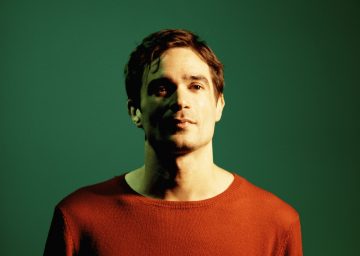
‘Singularity’ is out on May 4 through Domino and can be pre-ordered here. Be sure to listen to the tracks released far, ‘Emerald Rush‘ and ‘Everything Connected‘.
Tracklist:
Singularity
Emerald Rush
Neon Pattern Drum
Everything Connected
Feel First Life
C O S M
Echo Dissolve
Luminous Beings
Recovery
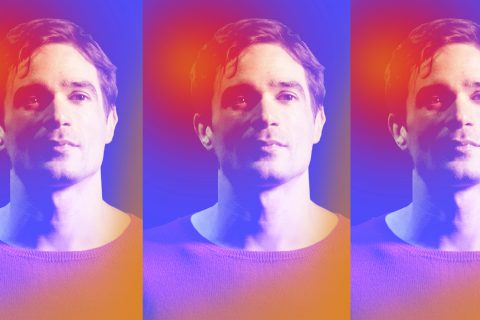
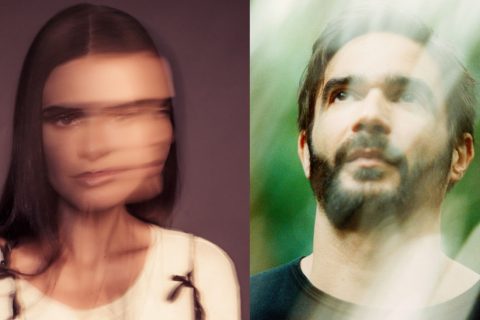
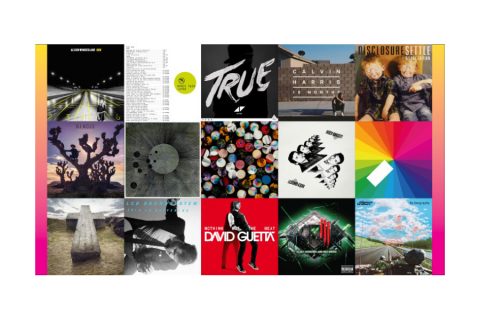
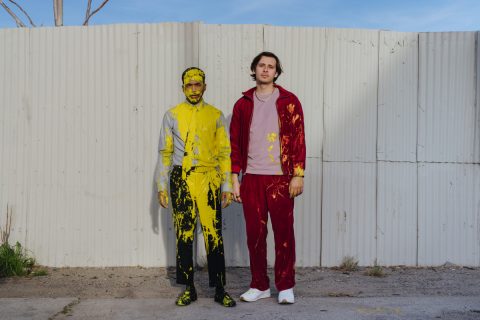
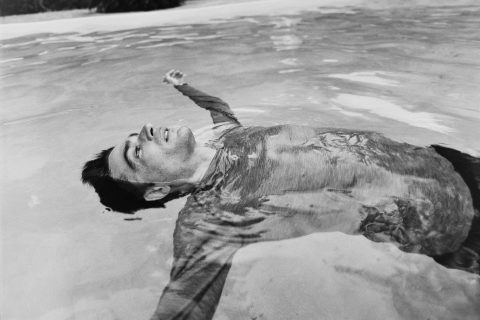
Comments